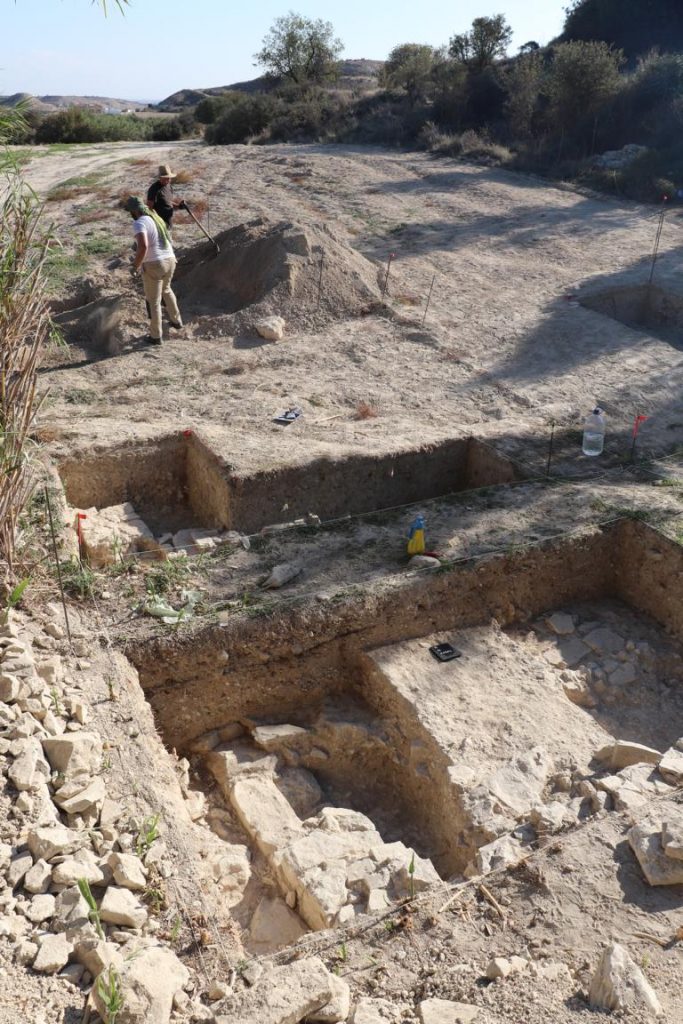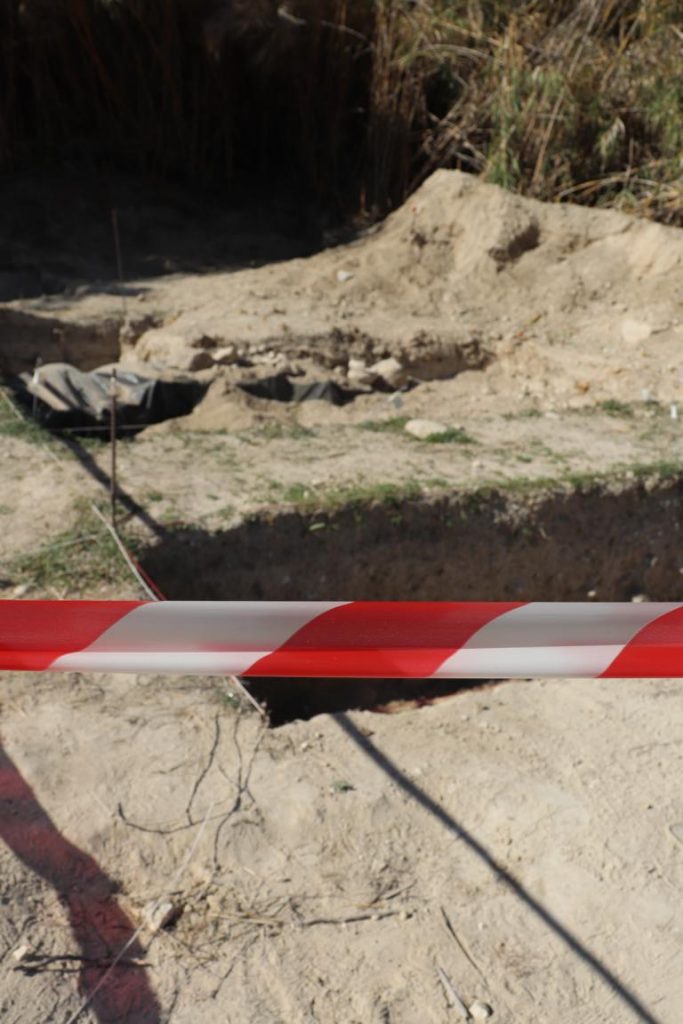In 2020, archaeologists from the Universities of Frankfurt and Kiel succeeded in locating the long-lost ancient sanctuary of Apollo at Tamassos-Frangissa in a valley not far from the village of Pera Orinis by means of an archaeological and geophysical survey. This first successful campaign was already supported by AMRICHA both financially and in terms of personnel.
As a continuation of this successful cooperation, the first excavation campaign in this area now took place in 2021. The goal of the current activities is, on the one hand, to rediscover the architecture discovered in 1885 in order to document the ancient remains that were left in situ according to modern scientific standards and to clarify questions about the building history. On the other hand, the excavation is to be extended to areas that have not been investigated so far, in order to record a stratigraphically reliable sequence of use phases and thus to be able to reconstruct the functioning of an ancient rural sanctuary on Cyprus over a longer period of time — in this case from the Archaic period to Hellenism.
The first meters into the past
The excavation took place from 18th of September to 22nd of October 2021 as part of a field school under the direction of Dr. Matthias Recke (University of Frankfurt) and PD Dr. Philipp Kobusch (University of Kiel). Parallel to gaining scientific knowledge, the project also pursued the goal of teaching the participating students from Germany, Italy and Cyprus fundamental techniques in excavation and (digital) documentation, as well as the basics of Cypriot archaeology. AMRICHA also provided substantial support in this campaign: Mag. Phil. Irene Pamer M.A. and Alexander Gatzsche M.A. undertook the restoration and conservation of the finds; the latter also provided technical support for the measuring and digitisation work.
The project was made possible by the kind permission of the Department of Antiquities Cyprus, which encouraged and supported the work in many ways. Special thanks are owed to the Director of the Department of Antiquities, Dr Marina Solomidou-Ieronymidou and the Curator of Excavations, Dr. Giorgos Georgiou, who also organised the transport of the large-scale finds to the Cyprus Museum.
The new excavation initially concentrated on an area in the south of the small river running through the valley. Here, a georeferenced grid with quadrants of 5 to 5 m was set up, in which a total of six trenches of different sizes were opened, each of which followed different questions. Among other things, they served to check and verify the results from the previous geophysical survey and to clarify the ancient topographical contexts.
During the excavation, a number of ancient walls were documented. Some of the walls are very long and are demonstrably connected to each other and thus form larger spatial units. They belong to a building of unknown function, at least 8 x 11 m in size. Their ancient origin can be regarded as certain. This is proven on the one hand by the building technique, which differs from the surrounding more recent terrace and retaining walls. On the other hand, several undisturbed, clearly ancient, layers could be recorded in connection with these walls. In contrast, no finds were made that would speak for a post-antique settlement in the area. However, ancient, post-antique and recent interventions can be recognised in the soil in many cases, which disturb the original ancient features. Among them was a straight, deep ditch cut into the rocky, hardened subsoil which was later filled in with stones and loose earth containing only a few ancient finds. It can be associated with the excavation work of the 19th century under Max Ohnefalsch-Richter. Together with another historical trial trench, which was already identified as such in 2020, it vividly documents the working methods of the archaeologist from Leipzig in the 19th century. The newly discovered walls cannot be identical with the structures documented at those times — their course cannot be reconciled with the published stone plan, so that the excavation was already able to uncover previously unknown ancient areas in the first year, showing that the sanctuary was far more extensive than could be assumed on the basis of the plan published in 1891.
The analysis of the walls and their arrangement made it possible to distinguish between several phases of ancient construction and usage. Their interpretation and dating are still difficult at the current state of research. However, they show that the site has a longer and complex ancient history, which is also indicated by the chronological spectrum of the finds, which range from archaic to Hellenistic times.
Fragments of statues and exotic imports
The character of the finds also shows that this area was indeed part of the ancient sanctuary. A large number of fragments of ancient statues made of terracotta and limestone were found, indicating intensive use of the cult site and an active votive tradition. Among them are not only remains of small statuettes, but also several fragments of large-sized statues, such as the lower part of a statue at least half-life-size. In addition, a massive limestone base of a life-size figure was recovered. A particularly rare artefact are the fragments of an ostrich egg, which as an exotic imported item was an exclusive and precious votive gift to the deity. It attests to the special attraction of the sanctuary and its original wealth.
The relationship of these building remains and finds to the core of the sanctuary uncovered by Ohnefalsch-Richter can only be clarified with the help of further excavations. However, the size of the site uncovered so far, its complex construction history and the nature of the finds already indicate the great potential of this place: Changes and developments in use in particular offer important clues for the analysis of cultural contexts and ancient ritual practices. Therefore, a continuation of the excavations is planned for the coming year.














